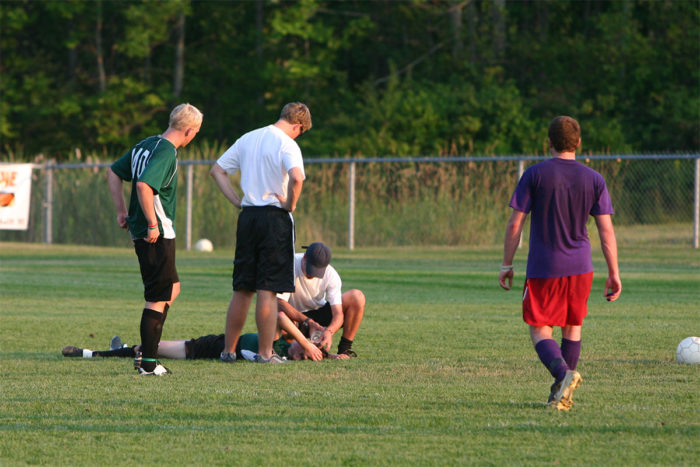New concussion recommendations for kids
Light activity, electronics OK during recovery
 Getty Images
Getty ImagesThe American Academy of Pediatrics (AAP) has updated its concussion recommendations to support children and teens engaging in light physical activity and returning to school as they recover. The report, revised for the first time in eight years, also advises against complete removal of electronic devices. Mark Halstead, MD, an associate professor of pediatrics and of orthopedic surgery at Washington University School of Medicine, was the lead author of the AAP report.
The American Academy of Pediatrics (AAP) has updated its concussion recommendations to support children and teens engaging in light physical activity and returning to school as they recover. The report, revised for the first time in eight years, also advises against complete removal of electronic devices, such as television, computers and smartphones, following a concussion.
Previously, the academy had recommended that kids recovering from concussions not be active or use electronics, due to concerns that either were too simulating and might hinder the brain from recovering. These recommendations are included in a new clinical report published online Nov. 12 in Pediatrics, the journal of the AAP.
“We’ve learned that keeping kids in dark rooms and eliminating all cognitive and physical activity actually worsened a lot of kids’ symptoms rather than improving them,” said Mark Halstead, MD, an associate professor of pediatrics and of orthopedic surgery and lead author of the AAP report offering updated recommendations on sports-related concussions in children and adolescents.
The basis for the AAP’s original recommendations stems from the notion that the brain needed time to recuperate after a concussion. However, researchers found that recovering children who were prohibited from activities and electronics can develop feelings of social isolation, anxiety or depression.
“Shutting down an active child entirely doesn’t make them feel good and, frankly, can make them feel like they are being punished for getting hurt,” said Halstead, director of the St Louis Children’s Hospital Young Athlete Center Sports Concussion Program. “Kids can develop anxiety by missing school, and the fear of getting behind can overwhelm them.”
Young athletes should stop playing immediately after a concussion is suspected, Halstead said. But light physical activity, such as brisk walking, can be incorporated as they are recovering. Similarly, academic workloads may need to be lessened after brain injury; however, such students shouldn’t need to miss prolonged periods of school or disengage in learning.
“A cookie-cutter treatment approach does not work, because no two concussions are alike,” Halstead said. “Although we have these recommendations, physicians and families need to evaluate each child or teen with a concussion on an individual basis.”
For boys, the report attributed most concussions to playing ice hockey, football and lacrosse. For girls, head injuries most often resulted from playing soccer, lacrosse and field hockey.
The AAP estimates 1.1 million to 1.9 million children and teens are treated for a recreational or sports-related concussion each year.
However, Halstead said concussions are still likely underreported, partly because of an overall lack of awareness about head injuries among families and coaches, and because of the belief by some young athletes that they need to tough out an injury for fear they won’t be able to play their sport again.
“More research is needed on sports-related concussions, especially among athletes in elementary and middle school,” Halstead said. “Much of the focus has been on high school athletes.”
Additionally, the report concluded that each concussion is unique, with symptoms varying in type and severity; most child and teen athletes will recover from a sports-related concussion within the first four weeks after injury; and the long-term effects of one or more concussions have not been determined.






